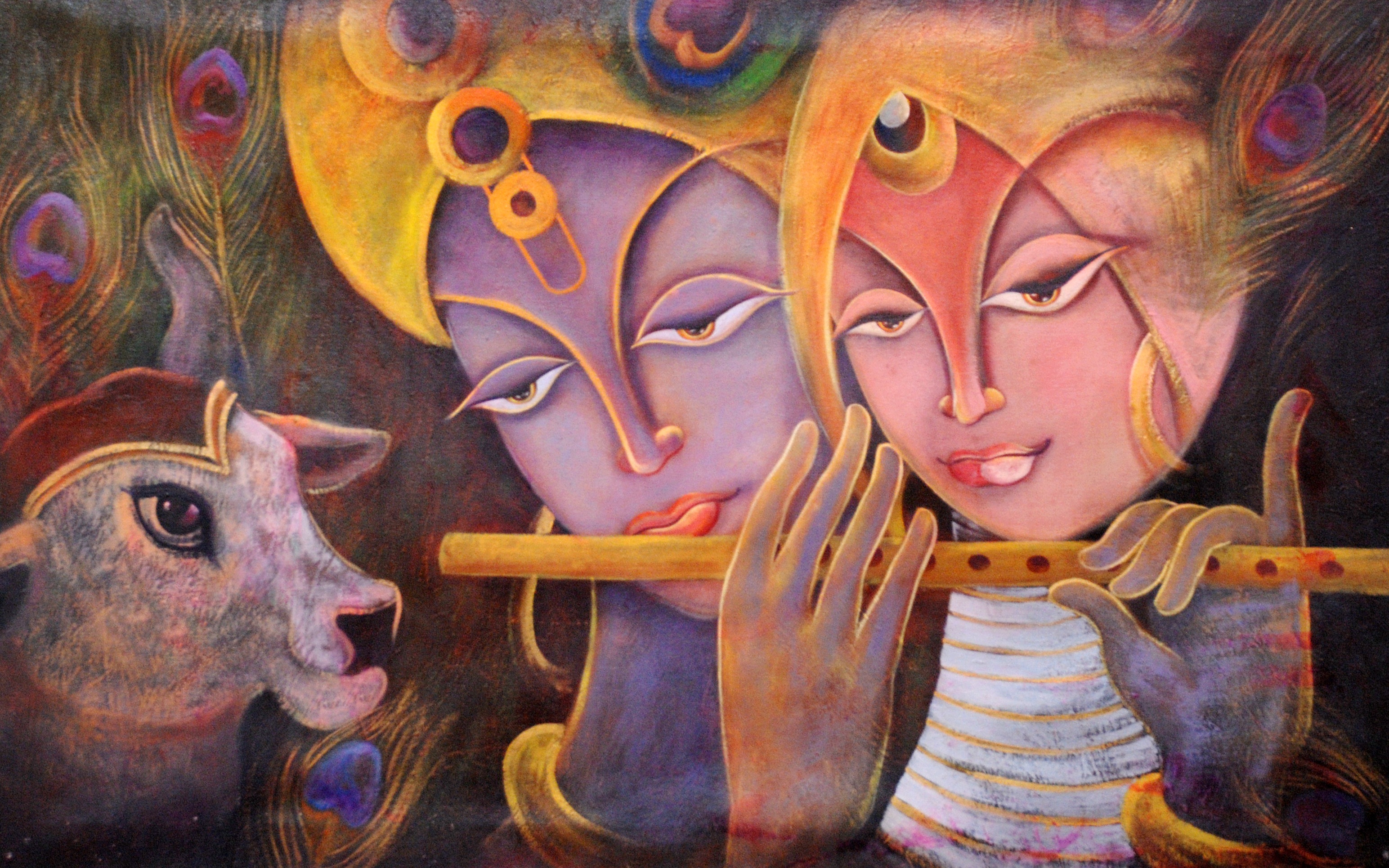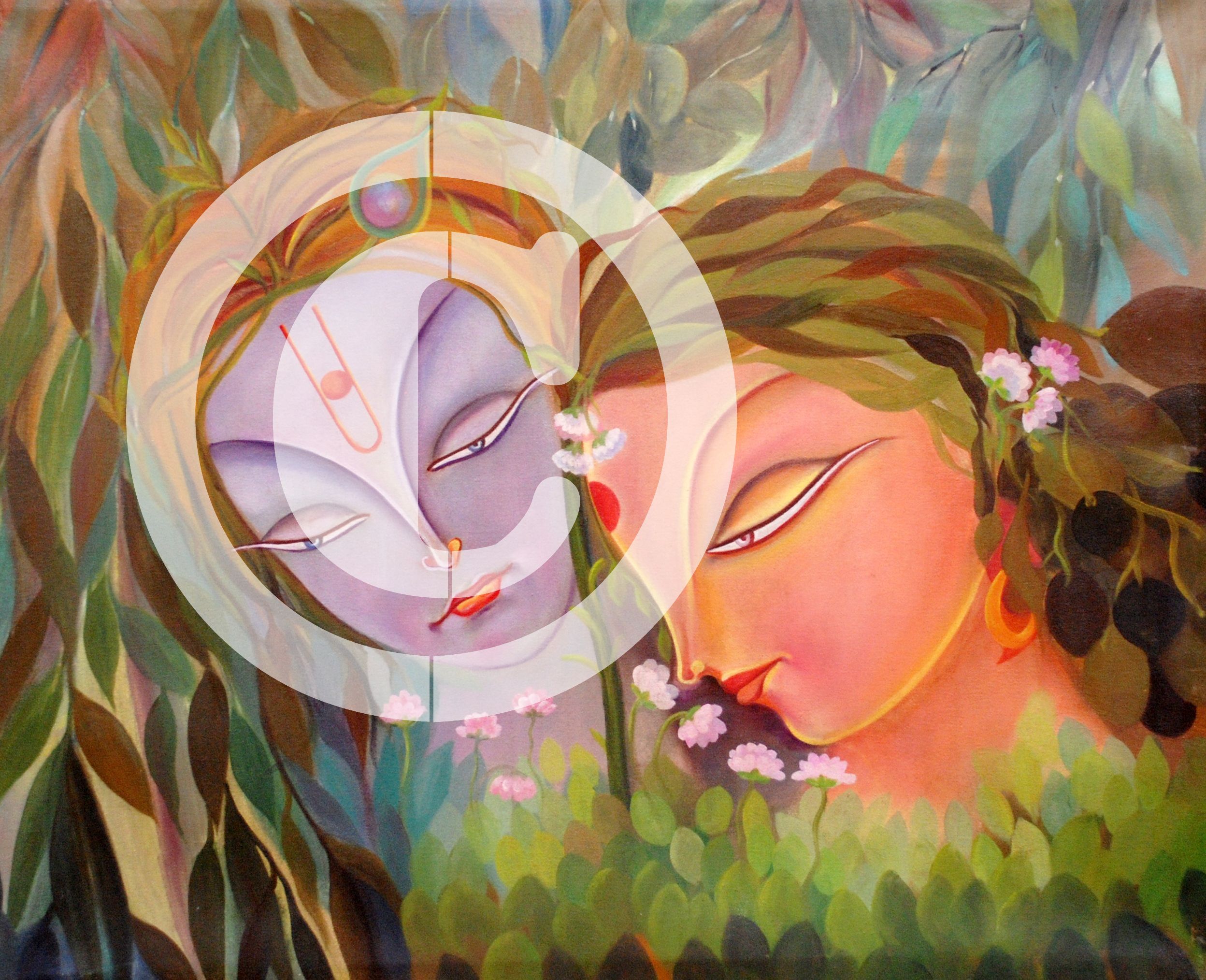
SIZE :37*24 CMS
PRICE ON
REQUEST

SIZE:29*31
PRICE ON REQUEST
Radha Krishna (IAST rādhā-kṛṣṇa, Sanskrit राधा कृष्ण) are collectively known as the combination of both the feminine as well as the masculine aspects of God. Krishna is often referred as svayam bhagavan in Gaudiya Vaishnavism theology and Radha is Krishna's supreme beloved. With Krishna, Radha is acknowledged as the Supreme Goddess, for it is said that she controls Krishna with Her love. It is believed that Krishna enchants the world, but Radha "enchants even Him. Therefore She is the supreme goddess of all. Radha Krishna".
While there are much earlier references to the worship of this form of God, it is sinceJayadeva Goswami wrote a famous poem Gita Govinda in the twelfth century of theCommon Era, that the topic of the spiritual love affair between the divine Krishna and his devotee Radha, became a theme celebrated throughout India. It is believed that Krishna has left the circle of the rasa dance to search for Radha. The Chaitanya school believes that the name and identity of Radha are both revealed and concealed in the verse describing this incident in Bhagavata Purana. It is also believed that Radha is not just one cowherd maiden, but is the origin of all the gopis, or divine personalities that participate in the rasa dance.
Name
RadhaKrishna cannot be broken into two – Krishna (Devanagari:कृष्ण), the eighth incarnation (Avatar) of Vishnu., and his shakti Radha(Devanagari: राधा)such was the love of Radha towards Krishhna that they became one Krishna in Vrindavana is sometimes depicted with Radha standing on his left, on whose bosom sits Laksmi.
The common derivation of Shakti and saktiman, i.e. Female and Male principle in god implies that Shakti and saktiman are the same. Each and every god has its partner, 'betterhalf' or Shakti and without this Shakti, is sometimes viewed being without essential power. It is a not uncommon feature of Hinduism when worship of a pair rather than one personality constitutes worship of God, such is worship of Radha Krishna. Traditions worshiping Krishna, as svayam bhagavan, who is male, include reference and veneration to his Radha, who is worshiped as supreme. It's an accepted view that union of Radha and Krishna may indicate the union of Sakti with the Saktiman, and this view exists well outside of orthodox Vaishnavism or Krishnaism. The Radha Krishna Ashta Shakthi Mandir at the Parashakthi Temple in Pontiac, Michigan, USA depicts this principle with Shri Radha Rani symbolizing Ashta (Eight) Shakthis of Saktiman Lord Shri Krishna.
Philosophy
Murty of Radha Krishna in Mayapur'sIsckon temple.
From the Vaishnava point of view the divine feminine energy (shakti) implies a divine source of energy, God or shaktiman. "Sita relates to Rama; Lakshmi belongs to Narayana; Radha has Her Krishna." As Krishna is believed to be the source of all manifestations ofGod, "Shri Radha, His consort, is the original source of all shaktis" or feminine manifestation of divine energy.
A number of interpretations according to traditions possess a common root of personalism in the understanding of worship. Specifically Caitanyaite Gaudiya Vaishnava doctrine and mission is fiercely "personalistic," proclaiming the supremacy of Krishna, the identification ofCaitanya as Radha-Krishna, the reality and eternality of individual selves, and a method for approaching the absolute reality and the Deity as a person first and foremost.
Jiva Goswami in his Priti Sandarbha states that each of the Gopis exhibits a different level of intensity of passion, among which Radha's is the greatest.
In his famous dialogs Ramananda Raya describes Radha to Caitanya and quotes, among other texts, a verse from Chaitanya Charitamrta , before he goes on to describe her role in the pastimes of Vrindavana.
The central pivot point of the theology is related to the word rasa. The theological use of the word can be found very early, about two thousand years before the Nimbarka or Caitanya school, in a phrase that the tradition frequently quotes: "Truly, the Lord is rasa" (raso vai sah) of Brahma sutras. This statement expresses the view that God is the one who enjoys the ultimate rasa or spiritual rapture, emotion
FAQ l CONTACT l SITE MAP l TERMS & CONDITIONS l PRIVACY l FOLLOW US